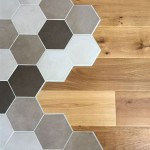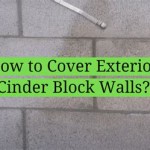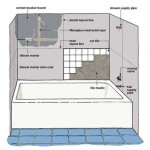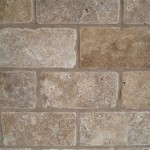Can You Lay Vinyl On Top of Floor Tiles? A Comprehensive Guide
The question of whether vinyl flooring can be installed directly over existing floor tiles is a common one among homeowners considering a flooring renovation. The answer is not a simple yes or no. Multiple factors influence the suitability of this installation method, and understanding these is crucial for achieving a successful and long-lasting result. This article provides a comprehensive overview of the considerations involved when laying vinyl over floor tiles, outlining potential benefits, drawbacks, and the recommended preparation steps.
Vinyl flooring, known for its durability, water resistance, and relatively easy installation, presents an appealing option for updating the appearance of a room. The prospect of skipping the demolition phase and directly installing vinyl over existing tiles can save time, effort, and money. However, neglecting proper preparation or ignoring underlying issues can lead to problems down the line, compromising the integrity and aesthetic appeal of the new flooring. Careful assessment and meticulous execution are essential for a successful outcome.
Assessing the Existing Tile Floor
Before considering any installation, a thorough assessment of the existing tile floor is paramount. The condition of the tiles will directly impact the success of laying vinyl on top of them. Any imperfections in the tile surface will likely telegraph through the vinyl, resulting in an uneven and visually unappealing finish. Cracks, chips, or loose tiles must be addressed before proceeding. Ignoring these issues will not only affect the appearance of the new floor but could also compromise its longevity.
Examine each tile carefully for any signs of damage. Small cracks may be filled with patching compound, but larger cracks may indicate underlying structural problems that need professional attention. Loose tiles must be re-secured; otherwise, continued movement will create voids under the vinyl, leading to potential damage and instability. The stability of the entire tile floor is critical – if the tiles are not firmly adhered to the subfloor, the vinyl installation will likely fail.
The type of tile also matters. Certain types of tile, such as heavily textured or uneven stone tiles, may require more extensive preparation than smooth ceramic or porcelain tiles. The texture of the underlying surface needs to be minimized to create a smooth foundation for the vinyl. Additionally, consider the grout lines. Deep or wide grout lines can create noticeable indentations in the vinyl surface over time, especially with thinner vinyl products. Addressing these grout lines is a key step in the preparation process.
Finally, assess the levelness of the floor. Significant variations in height can lead to uneven wear and tear on the vinyl, as well as potential issues with furniture stability. A self-leveling compound may be necessary to create a perfectly flat surface, ensuring a professional and durable finish. A level floor is not just aesthetically pleasing; it also prevents premature wear and tear on the vinyl material.
Preparing the Tile Surface for Vinyl Installation
Assuming the existing tile floor is generally sound, the next crucial step is preparing the surface for the vinyl installation. This involves cleaning, leveling, and smoothing the tile surface to create an ideal substrate for the new flooring. The preparation process is often more time-consuming than the actual vinyl installation, but it is integral to achieving a high-quality result.
Begin by thoroughly cleaning the tile floor to remove all dirt, grime, wax, and other contaminants. A degreasing cleaner is recommended to ensure proper adhesion of the vinyl adhesive or underlayment. Rinse the floor thoroughly and allow it to dry completely. Any remaining residue can interfere with the bonding process and affect the stability of the new flooring.
Next, address any imperfections in the grout lines. Filling the grout lines with a cement-based patching compound is typically necessary to create a smooth, even surface. Apply the compound according to the manufacturer's instructions, ensuring that it is flush with the tile surface. Allow the compound to dry completely and then sand it smooth to remove any excess material or imperfections. This step is essential for preventing the grout lines from telegraphing through the vinyl over time.
If the tile floor has significant height variations or unevenness, a self-leveling compound may be required. This compound is poured over the floor and flows to fill in low spots, creating a perfectly flat and level surface. Follow the manufacturer's instructions carefully when applying self-leveling compound, as improper application can lead to further problems. Allow the compound to dry completely before proceeding with the vinyl installation.
Finally, consider applying a primer to the prepared tile surface. A primer helps to improve adhesion between the tile and the vinyl adhesive, ensuring a strong and durable bond. Choose a primer that is specifically designed for use with vinyl flooring and follow the manufacturer's instructions for application. The use of a primer is particularly important in areas with high moisture or heavy foot traffic, as it provides an extra layer of protection against delamination.
Selecting the Appropriate Vinyl Flooring
Choosing the right type of vinyl flooring is just as important as preparing the underlying tile surface. Different types of vinyl have varying thicknesses, constructions, and installation methods, each with its own advantages and disadvantages. Selecting a vinyl product that is well-suited for installation over tile is crucial for achieving a successful and long-lasting result.
Consider the thickness of the vinyl. Thicker vinyl products are generally more forgiving of minor imperfections in the underlying tile surface. They are also more resistant to indentations and wear and tear. Thinner vinyl products may telegraph imperfections more easily and may be more susceptible to damage from heavy furniture or high foot traffic. While thicker vinyl often comes at a higher cost, the increased durability and improved appearance can be worth the investment.
Explore the different types of vinyl flooring available, such as sheet vinyl, vinyl tile, and luxury vinyl plank (LVP). Sheet vinyl offers a seamless installation, which can be particularly appealing in areas prone to moisture. Vinyl tile is available in a variety of styles and patterns and is relatively easy to install. LVP offers a realistic wood or stone look and is known for its durability and water resistance. The choice between these options depends on personal preference, budget, and the specific requirements of the room.
Consider the installation method. Some vinyl products require adhesive, while others are designed for a floating installation. Adhesive-backed vinyl offers a strong and secure bond, but it can be more difficult to remove or replace in the future. Floating vinyl installations are easier to install and remove, but they may not be as durable or resistant to moisture. Choose an installation method that is appropriate for the intended use and the level of DIY experience.
Finally, factor in the warranty offered by the manufacturer. A longer warranty provides added peace of mind and indicates that the manufacturer stands behind the quality of their product. Read the warranty carefully to understand the terms and conditions, as well as any limitations or exclusions. Choosing a vinyl product with a comprehensive warranty can help protect against potential defects or premature wear and tear.

Installing Luxury Vinyl Over Existing Tiles Choices Flooring

Can You Lay Vinyl Flooring Over Tile Mersey

How To Tile Over Linoleum Floors Correctly

Can You Lay Lvt On Top Of Flooring Blog

How To Install Vinyl Plank Floors In A Bathroom Over Tile

What Type Of Flooring Can You Install Over Ceramic Tile

Can We Lay Cushion Vinyl Over Quarry Tiles

How To Install Vinyl Plank Tiles In A Bathroom

Laying Vinyl Planks Over Tile Floors Ashley French

The Best Vinyl Flooring For Over Carpet
Related Posts








